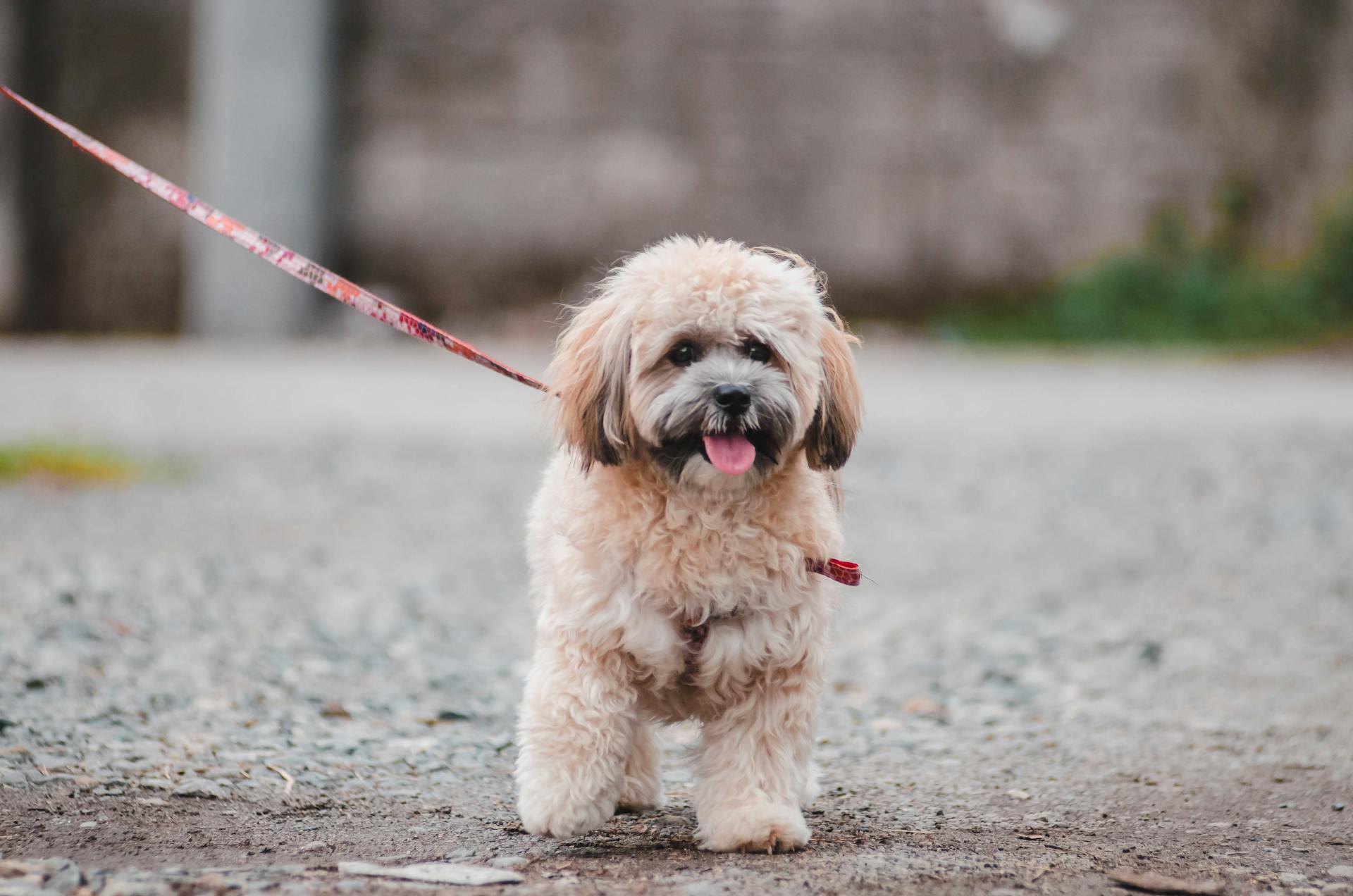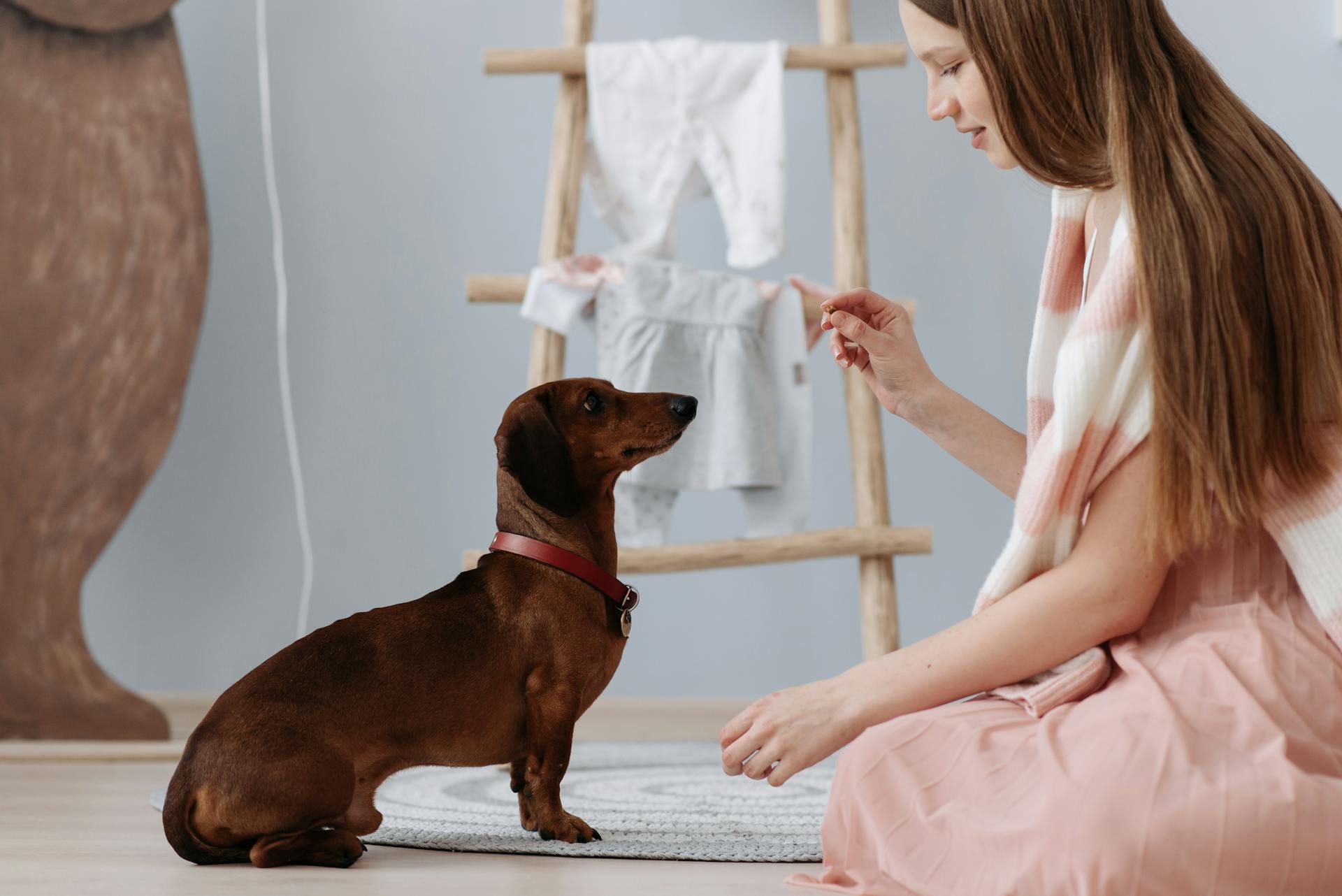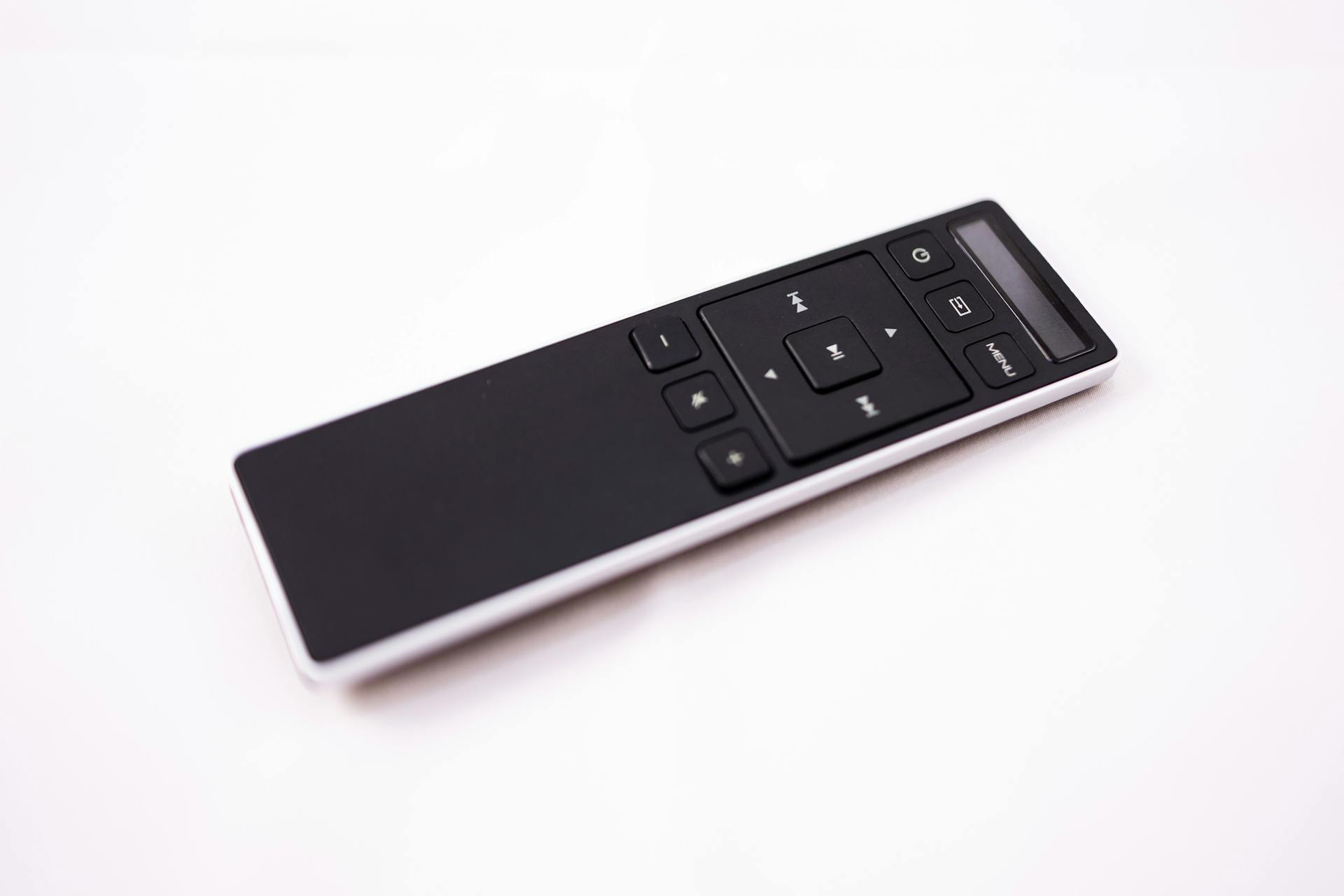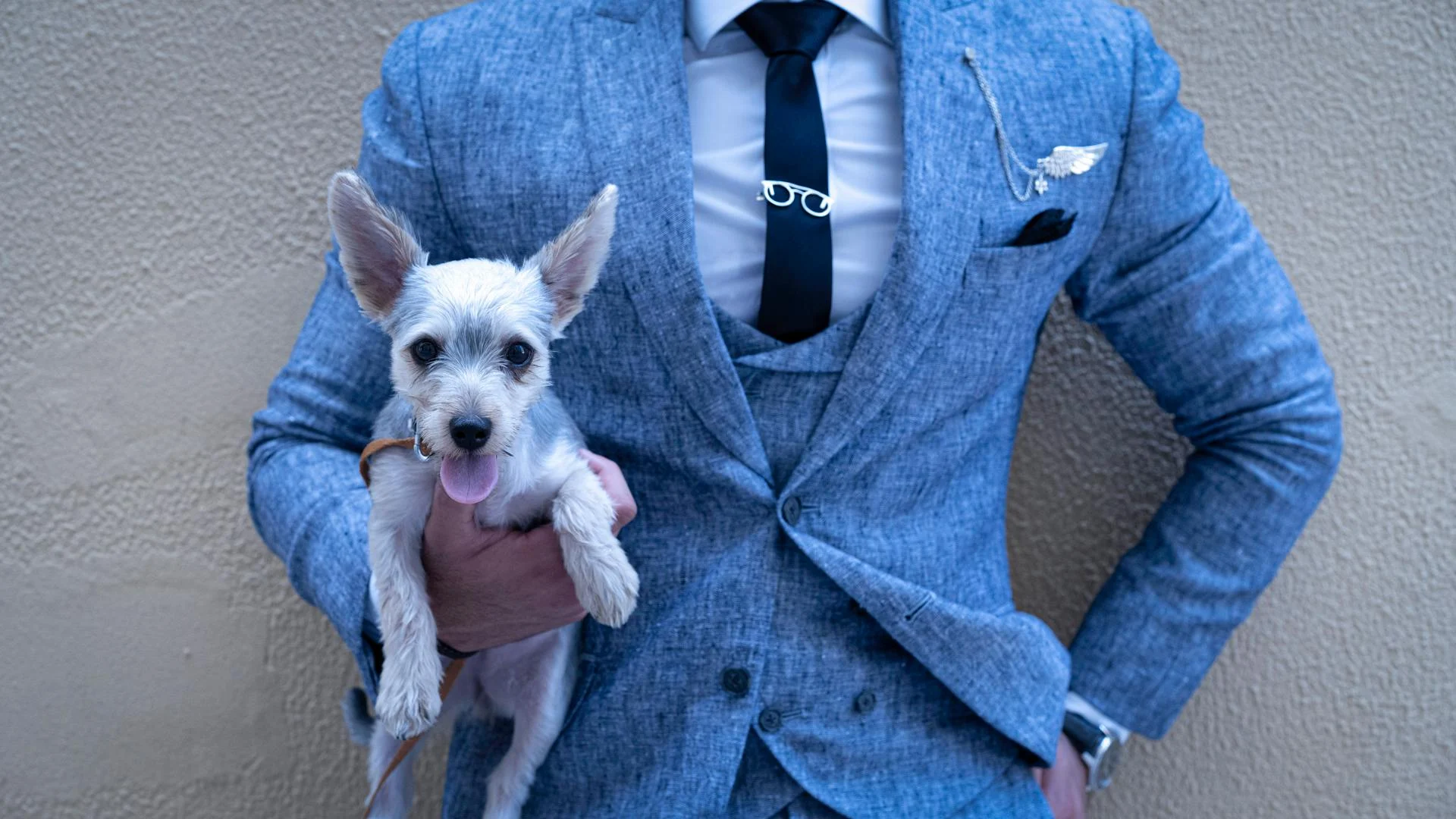
Clicker training is a fun and effective way to teach your puppy new tricks. It's based on the idea of associating a sound with a reward, which helps your puppy quickly learn and remember new behaviors.
Start by getting your puppy accustomed to the clicker sound, which should be a clear and distinct noise. You can do this by simply clicking the clicker a few times and rewarding your puppy with a treat.
To begin clicker training, choose a quiet and distraction-free area with minimal noise and distractions. This will help your puppy focus on you and the training process.
With your puppy's attention, use the clicker to mark the exact moment they perform the desired behavior, such as sitting. Then, immediately reward them with a treat and praise.
You might like: Training Dog Clicker
What Is Clicker Training?
Clicker training is a way to communicate with your puppy using a distinct sound or marker. This sound, often a click, is used to mark a moment when your puppy does something you want to encourage.
The clicker itself has no inherent meaning, it's just a way to signal that a reward is on the way. You can use any distinct sound or marker, such as snapping your fingers or clucking your tongue.
A reward is anything your puppy values, so if they love playing tug-of-war, use that as a reward instead of treats. The key is to pair the click with a reward every time, so your puppy learns to associate the sound with a positive outcome.
The click must be used at the exact moment your puppy performs the desired behavior, and every click must be followed by a reward. This consistency is crucial for your puppy to understand the connection between the click and the reward.
How It Works
Clicker training for puppies is a powerful tool for teaching good behavior and strengthening the bond between you and your furry friend. The clicker is simply a way to mark a moment, and it's not the click itself that's magical, but rather what it represents: a reward is on the way.
A clicker can be any distinct sound or noise, such as a whistle, a snap of the fingers, or even a light tap on the shoulder. For a hearing-impaired dog, a light or a gentle tap on the shoulder can be used instead. The key is to choose something that your dog will recognize as a marker.
The clicker works by pairing the sound with a reward, which can be anything your dog values, such as treats, praise, or playtime. It's essential to time the click correctly, so your dog understands what behavior is being rewarded. Try to click during the correct behavior if you can, and give the treat immediately afterwards.
One of the most significant benefits of clicker training is that it helps eliminate confusion about what behavior is being rewarded. Unlike praise, which is a natural part of dog ownership, a clicker is a specific tool for training. By using a clicker, you can avoid confusing your dog about what behavior is being rewarded.
Here are some key tips to keep in mind when using a clicker:
- Timing is everything: Click during the correct behavior and give the treat immediately afterwards.
- Reward every time: Even if you accidentally click the clicker, give your dog a treat anyway.
- Keep the treats small: Dog clicker training requires lots of treats, so keep them small to avoid weight gain.
- End on a positive note: Always end the training session on a positive note, with a correct action, a click, and a treat.
By following these simple tips and using a clicker consistently, you can help your puppy learn new behaviors and strengthen your bond with them. Remember, clicker training is a powerful tool, but it's only effective if you use it correctly.
Getting Started
To begin clicker training, start with your puppy in a quiet area without distractions, ideally when they're hungry. This will help them focus on the training.
Have a handful of your puppy's favorite treats ready, as well as a clicker. The clicker is a small mechanical noisemaker that will help you mark the exact moment your puppy performs the desired behavior.
Introduce the clicker to your puppy by pressing it and immediately giving them a treat. Repeat this click/treat combination five to 10 times to help your puppy associate the sound with a reward.
Choose a quiet room with no distractions, and make sure you have lots of small food treats on hand. This will help keep your puppy engaged and motivated throughout the training process.
Here are some essential tips to keep in mind:
- Timing is everything: Try to click during the correct behavior, and give the treat immediately afterwards.
- Reward every time: In the early stages of training, each click must mean a guaranteed treat.
- Keep the treats small: Dog clicker training requires lots of treats, so keep them small to avoid weight gain.
- End on a positive note: Always end the training session on a positive note, with a correct action, a click, and a treat.
Remember, clicker training is all about positive reinforcement, so be sure to reward your puppy for good behavior. With patience, consistency, and practice, you'll be well on your way to successful clicker training for your puppy.
Basic Training
Clicker training is a great way to teach your puppy basic commands, and it's surprisingly easy to do.
The first step is to load the clicker by associating it with a reward. This means clicking the clicker and immediately giving your puppy a treat. This process is called "charging the clicker."
Timing is everything when it comes to clicker training. You need to click at the exact moment your puppy performs the desired behavior, and then give them a treat.
Start with simple commands like "sit" and "stay." Click and reward your puppy as soon as they perform the action.
Here are some tips to keep in mind:
- Click and reward every time your puppy performs the desired behavior.
- Use small treats to avoid overfeeding your puppy.
- End each training session on a positive note, with your puppy receiving a reward.
- Practice regularly, but keep training sessions short to avoid overwhelming your puppy.
As you progress, you can start adding vocal commands to direct your puppy. Remember to click and reward each time, even if you're using a verbal command.
Here's a simple outline to follow:
1. Click and reward your puppy as soon as they perform the desired behavior.
2. Add a verbal command, like "sit", and click and reward each time.
3. Gradually phase out the clicker and treats as your puppy becomes more reliable.
Remember, consistency and patience are key to successful clicker training. With time and practice, your puppy will learn to associate the clicker with rewards and learn basic commands with ease.
Advanced Training
Clicker training can also be very effective for advanced training, allowing you to be hands-off except for delivering the reward. You don't need to manipulate the dog into position, which can often slow the process.
This method is ideal for teaching more complex behaviors and reinforcing desired actions. By clicking for small steps toward the behavior, you can work your dog toward the final, completed behavior.
To implement advanced training, simply click for small steps toward the behavior and work the dog toward the final, completed behavior.
For another approach, see: Do Dog Whistles Work to Stop Barking
Advanced
Clicker training is a valuable tool in the training process, allowing you to be hands-off and focus on delivering rewards. This method can be very effective for advanced training.
To use clicker training effectively, timing is everything. You need to click during the correct behavior and give the treat immediately afterwards. The click marks the moment your dog does what you want them to do, and lets them know that a reward is on the way.
To phase out the clicker, remember that it's generally for training new behaviors. Once your dog responds to the verbal command alone, it's a good time to start phasing out the clicker and the treats.
Here are some tips for phasing out the clicker:
- Start by reducing the number of clicks you use during training sessions.
- Gradually increase the time between clicks, allowing your dog to learn the behavior without relying on the clicker.
- Introduce verbal commands and praise to reinforce desired behaviors.
- Be consistent and patient, as phasing out the clicker can take time.
By following these tips, you can successfully phase out the clicker and have your dog learn new behaviors with ease.
Scent Work
Scent work training is a fantastic way to engage your dog's sense of smell, and clickers can be a game-changer in this process.
Clickers give positive feedback to the dog when they locate a target odor, which is especially helpful in scent work training.
By using clickers, you can encourage your dog to locate the desired object, making the training process more efficient and enjoyable for both of you.
This method has been found to be effective in scent work training, allowing dogs to learn and develop their skills at a faster pace.
You might enjoy: Are Clickers Good for Dog Training
Agility Work
Agility work is a fun and challenging way to engage your dog physically and mentally. Making your dog walk over a see saw or go through a tunnel is a great way to improve their agility skills.
Using clicker training can help you achieve this by providing immediate feedback to your dog. This ensures they know what behavior is expected of them and can learn to touch contact points on agility equipment.
Clicker training can also be used to teach your dog to associate specific behaviors with rewards, making it a valuable tool in agility work training.
Frequently Asked Questions
What age can you start clicker training a puppy?
You can start clicker training a puppy as early as 8 weeks old, but training time may vary depending on factors like age, temperament, and breed.
Can I use a clicker to stop puppy biting?
Yes, a clicker can be used to help stop puppy biting by teaching gentle mouthing, but it requires consistent training and positive reinforcement. Start by placing your closed fist in front of the puppy's face and clicking and treating when they don't nip.
Can you potty train a puppy with a clicker?
Yes, clicker training is a positive and effective method for potty training a puppy, especially when set up for success from the start. It's a great way to establish good habits and a strong bond with your new furry friend.
Sources
- https://www.akc.org/expert-advice/training/clicker-training-your-dog-mark-and-reward/
- https://www.thesprucepets.com/clicker-training-for-dogs-1118267
- https://yourpetandyou.elanco.com/us/behavior/guide-clicker-training-your-dog
- https://highlandcanine.com/blog/clicker-training-your-dog/
- https://www.treehugger.com/best-videos-for-clicker-training-your-dog-4862658
Featured Images: pexels.com


